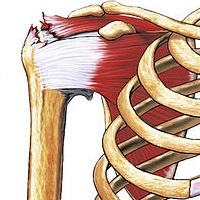
Photo from wikipedia
Purpose of ReviewGentle and continuous loads are preferred for optimum orthodontic tooth movement. Nitinol, an alloy of nickel and titanium developed for the aerospace industry, found its first clinical applications… Click to show full abstract
Purpose of ReviewGentle and continuous loads are preferred for optimum orthodontic tooth movement. Nitinol, an alloy of nickel and titanium developed for the aerospace industry, found its first clinical applications in orthodontics because it has ideal load-deflection behavior. The purpose of this review is to elucidate the criteria for effective orthodontic mechanics relative to emerging Nitinol technology. The specialized materials with variable stiffness that were originally developed for orthodontics are increasingly attractive for in the temporomandibular joint, orthognathic surgery, and orthopedics.Recent FindingsThe evolution of orthodontic archwires is driven by a need to achieve low load-deflection characteristics and Nitinol is the alloy of choice. Scientific knowledge of the biological response to orthodontic forces continues to grow, but definitive guidance on optimal force levels for individual teeth is elusive. Finite element models (FEM) that take into account periodontal ligament (PDL) stresses indicate differential force archwires are needed to realize optimal treatment. However, previous wire fabrication methods, including welding of different materials and selective resistive heating, are limited by poor mechanical performance and spatial resolution. Recently, a novel laser processing technique was developed for precisely programing relative levels of stiffness in a single archwire. FEM was used to estimate the optimal force for each tooth by calculating the 3D bone-PDL surface area.SummaryThere remains a general consensus that light and continuous forces are desirable for orthodontic treatment. New developments in archwire materials and technology have provided the orthodontist with a complete spectrum of load-deflection rates and differential force options to express these forces with maximized archwire economy. These technologies also appear to have application to orthopedic implant devices.
Journal Title: Current Osteoporosis Reports
Year Published: 2018
Link to full text (if available)
Share on Social Media: Sign Up to like & get
recommendations!